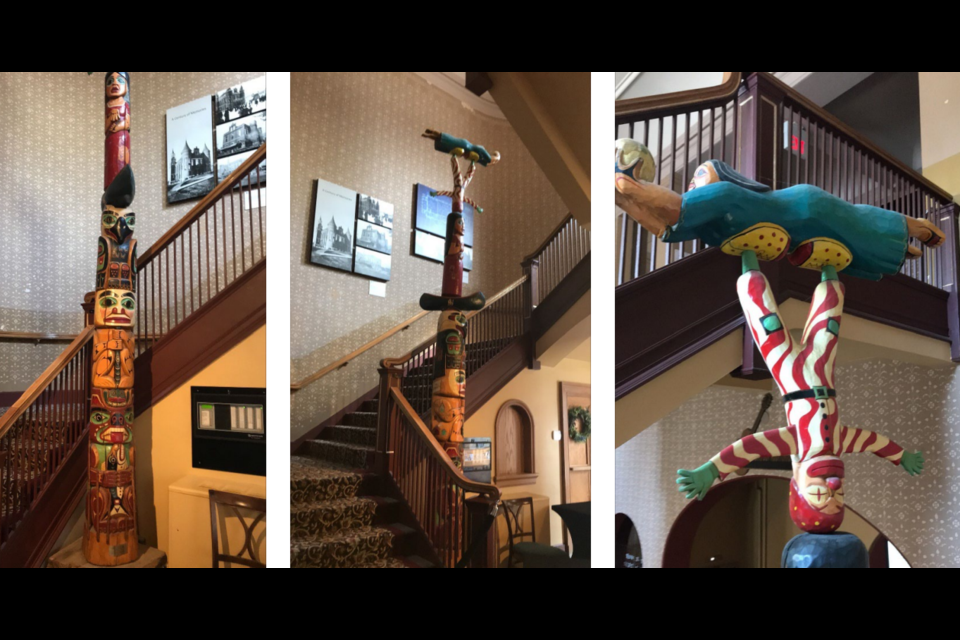The Orillia Opera House’s two-storey totem pole will soon be taken down, but its future has yet to be determined.
Created by artists Jimi McKee and Wayne Hill more than 20 years ago, the piece has developed deep cracks and structural instability toward the top, posing potential safety concerns for the public.
The work tells the story of Orillia from the days of fishing weirs at The Narrows through the present, in the fashion of totem poles created by west coast Indigenous communities.
Although restorative work may be possible for the totem pole, concerns brought forward by Opera House visitors have thrown its future into question.
In a report brought to council committee Monday evening, city staff recommended the work be permanently removed and returned to the artist, citing its structural issues and highlighting complaints received regarding its insensitivity to west coast Indigenous communities; the complainaint says it's unrepresentative of the nature of Indigenous communities in the Orillia area.
One complaint, from an individual who identified themselves as Indigenous, criticized the work for the ‘circus figures’ at the top and its ‘appropriated configuration’ of west coast Indigenous culture in which the totem pole is of spiritual and cultural significance.
“While not the intent of the work, given the sacred nature of the totem pole, health and safety concerns, and our growing understanding of Indigenous culture, it is the recommendation of the Art in Public Places Committee and staff return the piece to the artist,” said Jacqueline Surette, the city's manager of culture.
“This recommendation was not made lightly ... nor is it meant to put into question the artistry of the work.”
The recommendation comes on the heels of consultation with the Art in Public Places Committee, the Chippewas of Rama First Nation, and artist Jimi McKee.
However, council unanimously moved against the staff recommendation, instead directing staff to remove the art for now, due to safety concerns, but also to undertake additional consultation with McKee and other relevant Indigenous groups to discuss repairs, updates, and interpretation.
“Was there any opportunity to … consult with, for example, the B.C. chiefs? Would there be some type of other organization that might be able to weigh in?” asked Coun. Jay Fallis. “I certainly do understand this didn't come from a place that was mean spirited or anything like that. It was meant to celebrate the culture.”
Several members of council highlighted McKee’s deep respect for Indigenous history and art.
“I've known Jimi for roughly 30 years, not intimately, but well enough to know that he’s extremely respectful of the community, as he is of Indigenous past and Indigenous art,” said Mayor Steve Clarke.
“I was going to suggest that it was taken down for those health and safety reasons, refurbished, and either returned with (an) interpretation piece … and maybe remove a piece if it is found to be offensive, but return the rest of the piece," the mayor added.
"As we're attempting to reconcile with our First Nations people, our Indigenous peoples, I think we have to be very, very cautious that we don't jump to simple solutions like getting rid of things, but rather to invest the time and energy that each of us needs to put into really understanding the culture of our Indigenous people," said Coun. Ted Emond.
Decisions made at council committee will need to be ratified at the next council meeting on Aug. 25.



